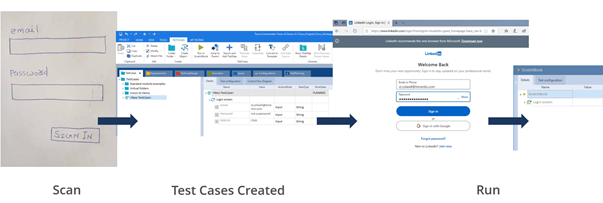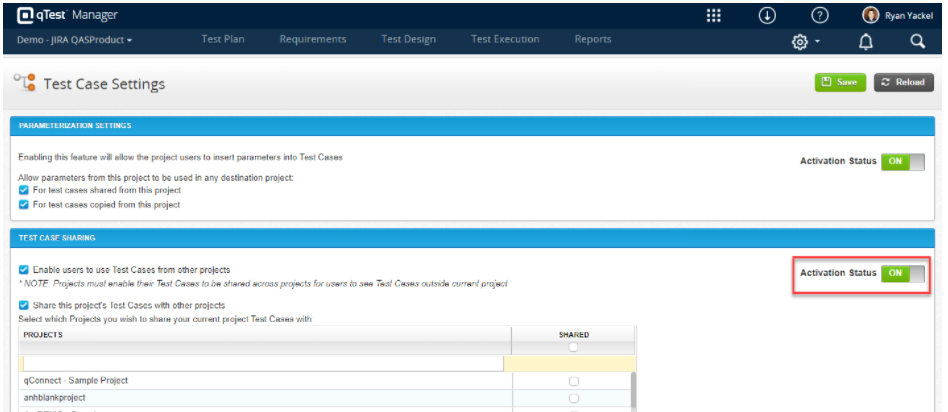
Agentic Test Automation in action
AI-powered testing assistant purpose-built for Tosca to enable...
Discover features in Tricentis’ continuous testing platform that can amplify your testing outcomes and streamline internal processes.
In today’s digital world, we rely on simple solutions to help solve big issues. Being so connected to smartphones and computers creates unique opportunities for us to be more efficient in our day-to-day routines. When it comes to the topic of software testing and the tools required, uncovering special features for increasing our efficiency sometimes calls for some exploration.
With a robust platform that supports all flavors and phases of continuous testing, Tricentis is laser-focused on helping our customers achieve quality testing in the most efficient way possible. Often this means focusing only on certain functionalities within our fully codeless platform, to solve your major testing challenges. In other cases, it means discovering and sharing new features, to amplify your testing outputs or streamline internal processes even further. Below, we highlight several Tricentis product features you might be curious to learn about.
With Vision AI, you can create test automation in the design phase of an application and run those same tests as the application evolves. Vision AI enables an extreme Shift Left approach to UI testing, enabling you to achieve in-sprint automation at the speed of DevOps.
How does this work in Tosca? Simply select the Vision AI engine and scan the drawing, which could be on a whiteboard or a simple sketch or mockup. This will create Tosca modules that you drag can and drop onto the test cases. Once the data is added to your test cases, you’re ready to go – the tests will successfully run for your application under inspection, even as the application evolves during Agile sprints. If you want to learn more about how to use Vision AI in your workflows, check out our Tricentis Academy YouTube Channel as well as the Manual.

Figure 1: Tricentis Vision AI
Tables are one of the most common components in business process testing across critical enterprise applications such as SAP, Salesforce, Oracle, and ServiceNow. However, searching through the thousands of data entries within these tables is hardly a simple exercise. With Tosca, you can quickly and easily search for specific data entries in complex tables – and all with a codeless approach.
When scanning your application under test, Tosca separates the test data from the objects you are steering. During automation, you simply populate your test steps with the data needed and instruct Tosca on what to do with it. For instance, you can save a data variable and use it later for verification purposes (buffer), search for a specific record (constraint), enter values (input), or select from a menu (see Tosca ActionModes for a full breakdown). To learn more about how you can use the action mode constraint to search similar records, check out this short video.
Hosting multiple projects within your qTest instance doesn’t mean multiplying efforts when it comes to updating test cases. qTest provides you with the ability to create a test run in one project using a test case shared by another. When changes occur that require a change to shared test cases, update the original test case to have it adjusted in all projects. No more tedious test case updating across projects for a simple environment change.
Select the project where the test case originates and activate “Test Case Sharing” under test case Settings. Bear in mind that this feature is different than copying test cases, which alternately creates two distinct test cases. When it comes to quality and efficiency, this functionality certainly fits the bill for the “build once and reuse multiple” philosophy. For additional ways to reuse test cases, refer to the qTest manual.

Figure 2: Tricentis qTest
No matter how simple or complex a project is, having one single source of truth for updates and feedback sharing could be the difference between project success or project failure. With test case management, this means giving stakeholders real-time visibility into changes within feature files and testing scenarios. qTest Scenario, our Enterprise Behavior-Driven Development product for Jira, tackles this by offering one single location for DevOps collaboration and feedback across the organization.
By storing feature files directly in GitHub, GitLab or Bitbucket, feature files and scenario steps are standardized as code, so testers, developers, and product owners, can create, update, edit and link feature files directly on the Jira interface to any issue type. Furthermore, qTest Scenario will update both Jira and your source code repository with changes from both systems. Learn more about qTest Scenario here.
Repurposing functional tests as performance tests is now as easy as pie. A premier capability of NeoLoad is the ability for testers to build upon functional testing outputs – specifically, taking test scripts from Tosca and Selenium, and converting those into performance test scripts. Done with just one click into the NeoLoad tool to execute your performance tests. Furthermore, because of a direct alignment between Tosca tests and NeoLoad test scripts, updates are deployed automatically whenever the functional tests change. This is what we refer to as the ONE Test Definition – an invaluable approach, with some customers seeing up to 90% time savings with script maintenance.
Application performance management tools are aplenty, but when it comes to capabilities, the AI-driven software intelligence platform Dynatrace surely stands out. With bi-directional integration, performance metrics captured by Dynatrace are immediately visible in NeoLoad, and NeoLoad test metrics are automatically visible in Dynatrace. As a result, you get one single source of truth — no more jumping from screen to screen cobbling together data to accelerate test analysis and pinpoint root-cause performance problems. You test faster, reduce risk, and boost productivity.
Here’s one way to avoid tool sprawl and increase the likelihood of adoption – get a tool that works equally well across teams with a wide range of testing experience. NeoLoad enables developers to express performance tests “as code” within their everyday development tool/IDE or CLI. With any user able to harness the scalability and test results analysis power with one platform across the organization, on-demand performance testing is much faster. Interested in learning more about NeoLoad? Watch this webinar on-demand or request a demo.
Knowing what to test is half the battle. Having a deep understanding of specifically which tests to run will make all the difference when it comes to speed to market. Pushing the boundaries of what’s possible beyond regression testing is the ability to spot coverage gaps or “hotspots” across your SAP system with LiveCompare. It analyzes previous releases to identify the areas within your SAP landscape that change most frequently and are deemed most at risk. These high-risk tests will then be marked as good candidates for test automation with Tricentis Tosca, before even testing an SAP update.
The more insights we have around our continuous testing efforts today, the better we will be tomorrow. Tricentis Analytics, our cross-portfolio reporting solution, offers visibility into QA activities all in one place for smarter business decisions.
To get started with reporting, users can leverage the BI templates included with Analytics (most recently, released for Power BI) or via full API access to your test data. For our early adopters in the tech preview, this means you can automatically drive your test data to your data lake, for greater flexibility and customization reporting with other data sources like Jira.

AI-powered testing assistant purpose-built for Tosca to enable...

We’re extending our proven expertise in test automation with...

Learn how to build a Workday testing strategy that minimizes...

Connect NeoLoad with Datadog to unlock real-time observability and...

Learn how a top European bank drove Agile transformation, tackled...